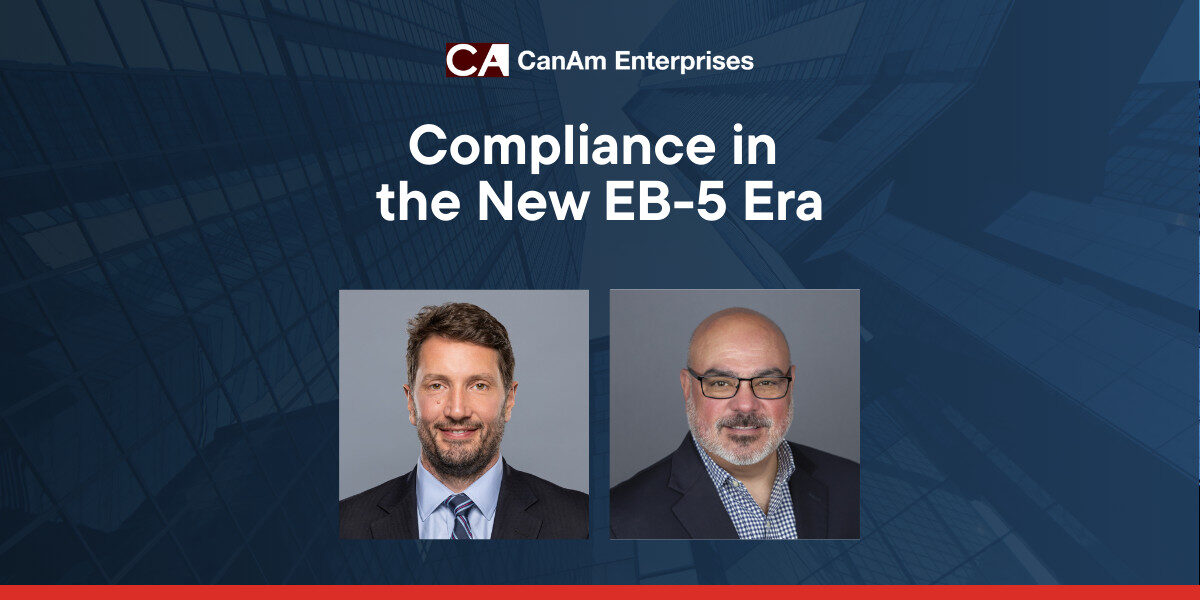Created by Congress in 1990 to stimulate the U.S. economy through job creation and capital investment by foreign investors, the EB-5 Immigrant Investor Program (EB-5) has gained popularity among foreign investors and U.S. real estate developers over the past decade. With visa backlog and retrogression issues, redeployment of EB-5 capital has certainly become one of the main concerns of EB-5 investors. However, it could be an advantageous opportunity for real estate developers seeking alternative financing.
Why Is There a Need to Redeploy EB-5 Capital?
The Immigration and Nationality Act sets an annual limit of 10,000 on the number of EB-5 visas that may be issued, which includes both the principal investor and his or her spouse as well as unmarried children under the age of 21. In addition to the overall annual limit of 10,000 EB-5 visas, there is also a per-country cap of 7%, or 700 EB-5 visas. When it appears that the 10,000 EB-5-visa limit will be met in a given fiscal year, and also that a country will use up its individual 700 EB-5 visa allocation, the U.S. Department of State will impose a “cut-off” date for the issuance of EB-5 visas to immigrants from that country. This is called retrogression. As the popularity of the EB-5 Program skyrocketed within China over the last five years, and also grew significantly in other countries such as Vietnam, Korea, and India, the global demand for EB-5 visas has far exceeded the 10,000 annual limit, leading to retrogression being announced for investors from these countries.
Overview of USCIS Policy Guidelines on EB-5 Redeployment
In June 2017, USCIS updated the Policy Manual to clarify that even after the required number of jobs have been created by the original EB-5 investment, an investor must sustain the investment throughout his or her conditional green card period. In this regard, redeployment, or “further deployment” in another investment as it is called in the Policy Manual, may be used to satisfy the capital-at-risk requirement. The Policy Manual further states that any redeployment of capital after satisfaction of the job-creation requirement must have the following three “at-risk” components:
• The immigrant investor must have placed the required amount of capital at risk for the purpose of generating a return on the capital placed at risk;
• There must be a risk of loss and a chance for gain; and
• Business activity must actually be undertaken
Clearly, a number of investments may meet these three “at risk” requirements. The Policy Manual provides only two examples – namely a redeployment into another construction project or new issue municipal bonds, such as for infrastructure spending – but USCIS has yet to provide additional guidance or further clarification on its redeployment requirements. While the EB-5 stakeholder community is presently advocating for USCIS to confirm that the scope of permissible redeployment vehicles is broader than these two examples, USCIS has yet to do so.
What Redeployment Options Are Currently Available in the EB-5 Marketplace?
With this lack of clarification, it is not surprising that most of the current EB-5 redeployment platforms mirror the two examples that are explicitly mentioned in the USCIS Policy Manual – namely, investments into real estate assets and/or investments in municipal bonds.
The leading EB-5 regional center operator, CanAm Enterprises (CanAm), began successfully redeploying EB-5 investor funds in Q2 2019. CanAm’s diversified EB-5 redeployment platform offers mezzanine loan investment options to its EB-5 investors, all of whom have individual redeployment timeframes, risk tolerances, and expected returns.
The typical mezzanine loan from CanAm’s redeployment platform includes lending parameters such as:
• Borrowers are qualifying real estate developers who seek additional short to mid-term (approximately 3-5 years) funding in addition to senior loans and equity.
• Up to 80% loan to cost ratio.
• Project type: new construction, asset repositioning and/or tenant improvements in a variety of asset classes, such as, office, hotel, multifamily, industrial, and mixed-use properties.
• Once the developer pays operating expenses and the outstanding senior debt, revenues must go to pay the mezzanine loan before equity investors can receive any distributions.
“CanAm’s redeployment platform offers a creative financing alternative for real estate owners and developers,” said John Reid, Director of CanAm Capital Partners, an affiliate of CanAm Enterprises, “As a non-institutional investor, we have greater flexibility in how we structure our investments. For quality projects and sponsorship, we are able to offer competitive terms at slightly below market rates.”
CanAm has engaged its affiliate, CanAm Capital Partners (“CACP”), to source mezzanine loan investment opportunities offering premium risk-adjusted returns by focusing on geographies and assets where CanAm has informational, operational, and other competitive advantages. The CACP team leverages CanAm’s more than 30 years of experience in immigration-linked investments, including fundraising and investing under the EB-5 Program for more than 55 projects in a variety of industries, totaling over $2.8 billion.
To learn more about CanAm’s diversified EB-5 redeployment platform, please contact CACP at 212-668-0694 or info@canamcapital.com
Disclaimer: All content in this article is information of a general nature and does not address the circumstances of any particular individual or entity. Nothing in this article constitutes professional, legal, investment, and/or financial advice, nor does any information herein constitute a comprehensive or complete statement of the matters discussed or the law relating thereto.





